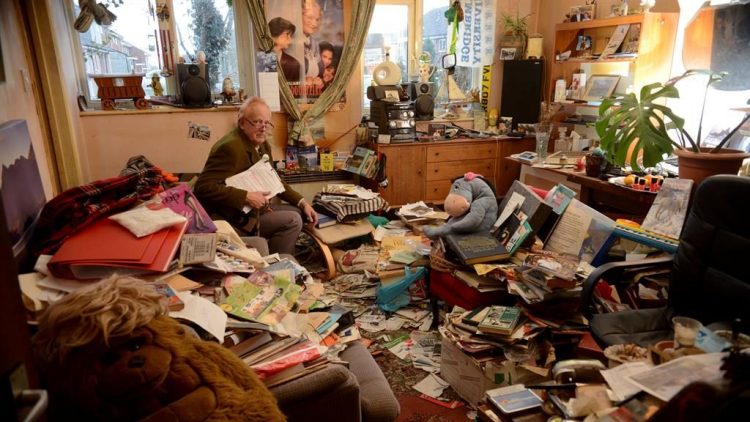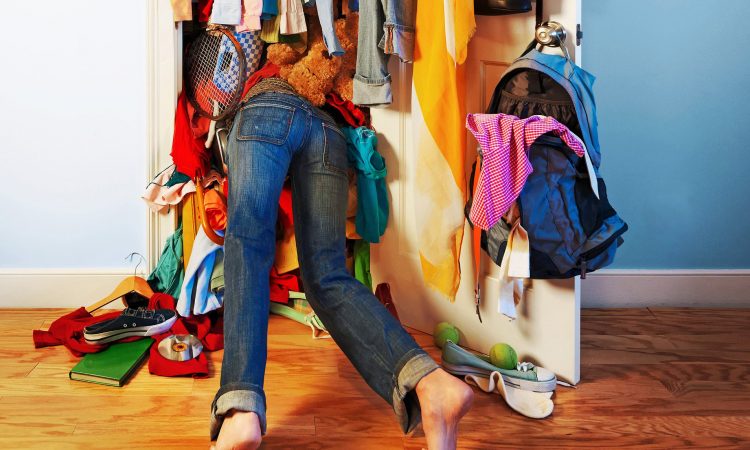Those who experience mental health disorders, symptoms, and other concerns often seek out coping mechanisms to handle the emotional distress that tends to permeate the mind.
From nail-biting to shutting friends and family out of your life, coping mechanisms, while tempting and comforting, aren’t always healthy; in fact, they can become genuinely harmful to your mental and physical health.
One example of how coping mechanisms can blossom into something more serious is hoarding disorder. Hoarding disorder is characterized by excessive “hoarding,” or the practice of acquiring many possessions and/or the inability to dispose of one’s possessions.
If you believe that you or a loved one may be dealing with a hoarding disorder, identifying relevant symptoms can be the first step toward determining whether it may be time to seek help.
Click here to take a short, but comprehensive, quiz on the symptoms of hoarding disorder from Mind Diagnostics, a leading authority on mental health information and care. Please note that while informative, these types of quizzes and resources are not meant to replace an official, professional diagnosis and should instead be utilized as tools to help you better understand your experiences.
What is Hoarding Disorder?

Hoarding disorder, or compulsive hoarding, is a disorder rooted in the inability to get rid of trivial possessions or the compulsion to acquire them. It can often lead to very uncomfortable and detrimental living situations.
For example, individuals who experience a compulsion to hoard may end up living in poor physical health due to an excess of rotting food/objects or an inability to move around in their living space (which can lead to consequences like frequent trips and falls).
In addition, hoarding objects, while usually a coping mechanism and tool for comfort, can cause a cyclical downturn in one’s mental health due to increased isolation and inability to complete basic daily tasks.
Hoarding is not the same as collecting items – hoarding typically causes an inherent degradation and negative impact on one’s quality of life.
While collectors may collect objects that have meaning or a unifying theme, people who hoard will often “collect” objects whether or not they have meaning or out of fear of disposing of them.
Hoarding may also lead to a false sense of safety or security through being around one’s hoarded objects, while the collection is usually due to interest or admiration of said objects.
Signs and symptoms of hoarding disorder to look out for include:
- Desire to continuously acquire items even after there is no space.
- The persistent thought that it is necessary to keep these items because they may be useful one day.
- Fear of extreme discomfort at the thought of disposing of items.
- Build up of unnecessary or unsanitary items.
- Excessive fear of “wasting” things.
- Belongings overflowing into spaces where they don’t belong to the point of becoming burdensome or dangerous.
- Perfectionist and indecisive thinking when it comes to belongings, especially when disposing of them.
- Constant loss of important items or inability to organize possessions in a meaningful way.
The Causes of Hoarding Disorder

Hoarding disorder is not always caused by the same things for each individual that experiences it; often, it may not be very clear what the root cause actually is.
Just like many other mental health disorders, having a family history of hoarding disorder may impact or cause one to experience the same sort of symptoms. Being surrounded by hoarding behaviors can make it hard to shake these habits later in life.
In addition, experiencing trauma may lead to hoarding disorder. In this case, hoarding often presents itself as a coping mechanism in order for an individual to feel more comfortable when faced with a stressful or dangerous situation, even after that situation is over.
Hoarding disorder may also present itself more often in individuals with a certain personality type. Personality traits that include indecisiveness or anxious attachment may predispose one to develop hoarding disorder.
Many people who experience hoarding disorder may experience it in conjunction with or as a symptom of another mental health disorder.
These impactful mental health disorders include but are not limited to anxiety disorders, depression, obsessive-compulsive disorder (OCD), and attention-deficit hyperactivity disorder (ADHD).
Because hoarding is often a coping behavior, the symptoms may develop in order for an individual to cope with the symptoms of another mental health disorder, sometimes without an individual even realizing it.
How to Treat Compulsive Hoarding

Treatment for hoarding is often essential in order for those affected to live a happier, healthier life.
Because not much is known about hoarding disorder, it can be difficult to prevent, especially because these behaviors tend to start out small and spiral over time.
However, once signs and symptoms do arise, it is possible to seek help from a trusted therapist or another mental health professional. Professional care helps individuals feel more in control and at peace, and it can also help to prevent further damages to one’s health or property.
Therapy for Hoarding Disorder

Finding therapists who treat hoarding disorder or compulsions is similar to finding therapists who treat a variety of other mental health disorders.
Finding the right therapist, no matter what type of treatment you pursue is key; an important part of finding the right person is ensuring you feel safe and secure with them.
It’s difficult, if not impossible, to fully open up and be vulnerable around individuals we don’t feel genuinely comfortable with, and while it does take time to develop a solid relationship, trust your gut if you feel like the therapist(s) you meet with aren’t the best fit.
When treatment begins, it’s often beneficial to think about what the root cause to the hoarding compulsions may be; this process can help a professional find the style of therapy that will be most effective for the situation at hand.
Many treatment plans for compulsions such as hoarding include an examination into the root cause of the compulsion, namely the thought patterns that lead to the behavior. This is why cognitive-behavioral therapy (CBT) may be the right choice for someone who experiences hoarding disorder, though many different kinds of therapy can be effective.
The patient and therapist will work together to identify these thought patterns as well as the address that they may not be rooted in truth. This can then help to curb any hoarding behaviors that can be detrimental to one’s health.
Final Thoughts

Hoarding disorder, while seemingly harmless at first, can build up over time to cause deep distress, burden, and even danger to someone who experiences it or their loved ones.
Hoarding often causes social isolation due to both the stigma against the mental disorder, as well as the unsanitary and dangerous nature of the symptoms. The reality of this disorder can be debilitating, and the stigma surrounding “hoarders” can make it hard for individuals to recognize when they need and deserve professional care.
However, it is possible to seek help for you or your loved one. Therapy can help someone who experiences hoarding disorder address their thought patterns, fears, anxieties, and the subsequent compulsions that lead to hoarding.
Even though this mental health disorder may seem very scary, you have the power to address it and work towards a healthier life.
 Hi Boox Popular Magazine 2024
Hi Boox Popular Magazine 2024



